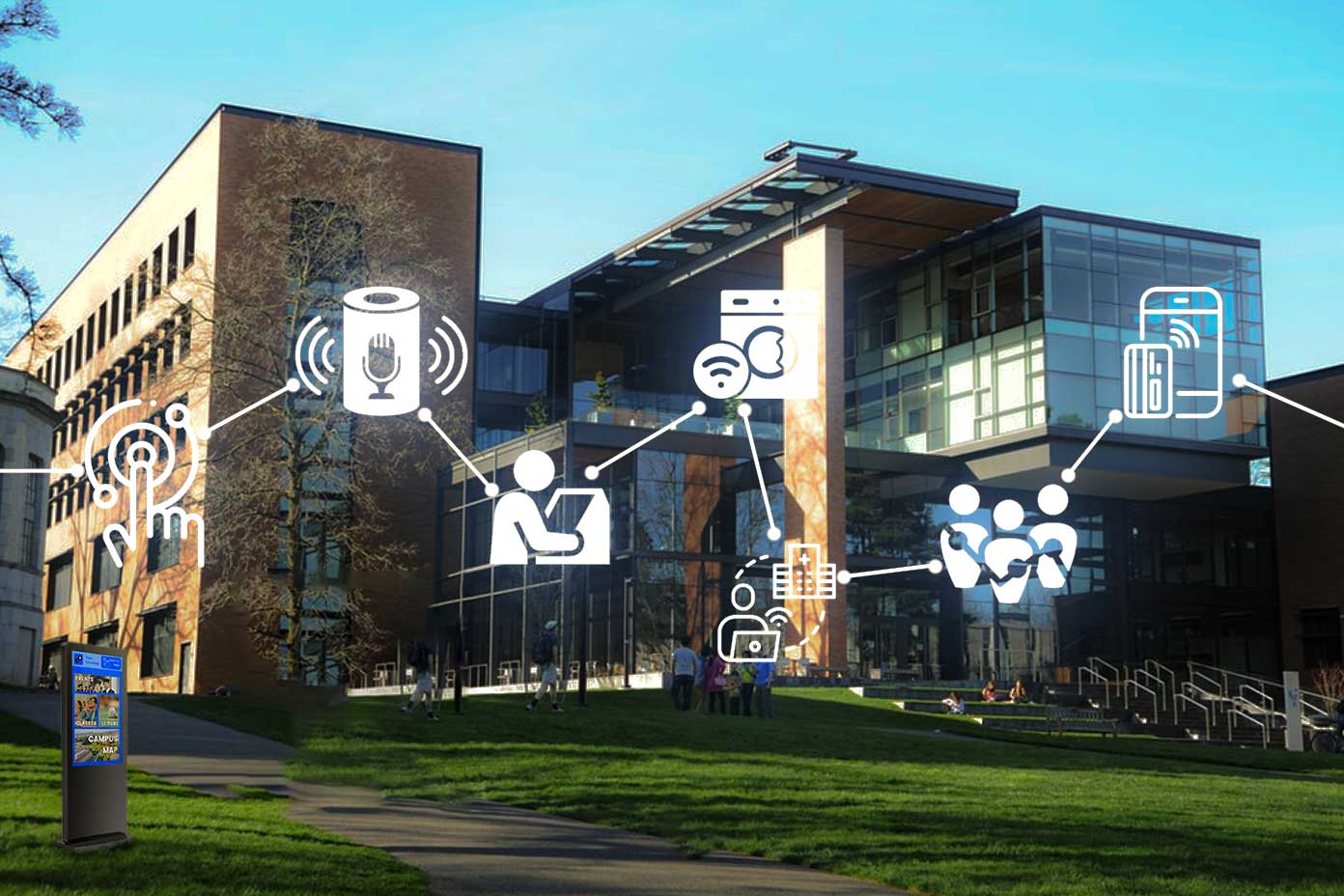Ed Tech Blog

In an era where technology is seamlessly interwoven into the fabric of education, the mobile device has emerged as both a powerful tool and a potential distraction in the classroom. As educators strive to harness the boundless opportunities afforded by smartphones and tablets, they are met with the challenge of maintaining control and focus within their learning environments.
Enter Mobile Device Management (MDM) – a dynamic solution poised at the intersection of pedagogy and technology, offering a strategic framework for educators to navigate the complexities of integrating mobile devices into the modern classroom. With MDM, educators wield the power to orchestrate a harmonious symphony of learning, leveraging the transformative potential of mobile technology while safeguarding against its pitfalls.
Join us on a journey as we explore the multifaceted landscape of Mobile Device Management, where innovation meets intentionality to unlock the full spectrum of educational possibilities in the digital age. We will look at reasons why you should consider utilizing a Mobile Device Management software in your institution. This post will also talk about some common traits or features you should look for when you are considering buying Mobile Device Management software for your institution.
Why Do We Need Mobile Device Management?
In the rapidly evolving landscape of education, the integration of mobile devices into classrooms has become virtually inevitable. These devices hold immense promise, serving as portals to a wealth of information, fostering collaboration, and nurturing digital literacy skills essential for success in the 21st century. However, with this influx of technology comes a pressing need for effective management to ensure that classrooms remain centers of focused learning rather than arenas of distraction.
Schools will increasingly require mobile device management (MDM) solutions to navigate the complexities inherent in the use of smartphones, tablets, and laptops within educational settings. MDM offers...
Read more: Unlocking the Potential of Mobile Devices in the Classroom
In the dynamic landscape of modern education, the fusion of American Sign Language (ASL) and technology has emerged as a transformative force, reshaping the classroom experience for both students and educators alike. In this digital era, where communication knows no bounds and technology permeates every facet of our lives, the integration of ASL into educational settings is not only inevitable but also invaluable. As we navigate the intersection of ASL and technology within the classroom, we embark on a journey that transcends traditional boundaries, unlocking new avenues for inclusive learning, communication accessibility, and innovative pedagogy. Join us as we delve into the symbiotic relationship between ASL and technology, exploring its profound implications for the future of education and fostering a more inclusive and interconnected learning environment for all.
Problems Deaf Students face in the Classroom
Despite the advancements in education and technology, deaf students continue to encounter a myriad of challenges within the traditional classroom setting. One of the most prominent hurdles is the pervasive communication barrier. Many classrooms still lack adequate support for American Sign Language (ASL) interpretation or fail to provide resources for deaf students to fully engage with the curriculum. This deficiency not only impedes their ability...
Read more: Breaking Barriers: The Intersection of ASL and Technology in Education

Schools can sometimes feel like a place to only learn about facts and figures. This is even supported by the fact that students need to appear exams and they need to “understand” or “memorize” certain number of facts to move onto the next grade. If you ask any student or parent about why school exists, learning different subjects top the list, but almost nobody will mention learning about controlling emotions, and empathy.
In this post, we will learn about teaching students to comprehend their emotions fully and fit into society as an emotionally stable person in what is called Social Emotional Learning (SEL). The focus of this post will be how technology can exponentially multiply the effectiveness of SEL.
What is Social-Emotional Learning?
Put simply, social-emotional learning is a learning path for students to understand their own emotions and demonstrate empathy for others. By learning more about themselves in this way, they will be able to be:
- Aware of their own emotions and how it affects their day-to-day behavior.
- Manage their own self and allow themselves to work towards a specific goal by taking ownership of their own actions, skills, and emotions.
- Make themselves socially aware by putting themselves in...
Read more: Harnessing Technology for Social-Emotional Learning

During COVID times, schools all over the country moved online to offer remote learning opportunities to students. This happened very quickly, and it made educational institutions undergo rapid digital transformations. As with anything that is done rapidly, thoughts about security comes last. In this post we will go through a very reliable security framework for K-12 institutions called Zero Trust.
What is Zero Trust?
Zero Trust is a security model in which every access to the entire organization’s network is monitored continuously. So, in this security model, every attempt to access a school’s network is firstly verified and approved. This Zero Trust security model is a requirement for Federal government IT teams, and the Pentagon has an aim to make the entire agency operate on the Zero Trust architecture by 2027.
In simple terms, Zero Trust believes that every single traffic, every single user, and every single system connected to the network is a potential threat that should not be trusted. Zero Trust gives equal opportunities to outsiders and insiders to access network services, but only the ones with the correct credentials will be allowed in. This is done so by using strong authentication, device posture checking and other contextual...

Would you love to live in a building that could communicate with you? Buildings that could tell you when it is too cold, knows when to turn on the lights, and that can be controlled by your phone. These buildings are the exact type of buildings we will consider in this post about smart campuses for educational institutions.
Advantages of Smart Campuses
Smart buildings can help educational institutions improve the learning experience by creating a comfortable, and personalized learning environment. Students and faculty would experience digital, and fully connected classrooms that would make the classrooms easily accessible to all students equally.
Smart campuses with sensors to measure the structural integrity of the buildings would also identify and prevent disasters from happening. There are sensors that measure water pressure in water pipes to identify damages in pipes in the buildings. All these sensors will help reduce maintenance costs.
Smart buildings are also fully monitored, so the security of the campus would also be improved. All buildings would be monitored in real-time, with access controls, alerts, and emergency response capabilities.
Smart buildings that control heating and cooling, lighting, water, and other preferences will also make the campus environmentally friendly by reducing its...
Read more: Exploring the Role of Technology in Shaping the Campus of Tomorrow

Artificial Intelligence (AI) is not what the Terminator made it out to be. Currently, all AI agents are neatly nestled in a webpage which is connected through the backend to millions of dollars’ worth of computing hardware. If the AI agents right now go rogue, all we have to do is cut the cords and they will stop. On a more positive note, in this post we will be looking at how AI can be used to ease the most tedious part of a teacher’s life, grading.
Traditional Grading
Traditional methods of grading have long been a cornerstone of the education system, relying primarily on human judgment to evaluate student performance. These methods typically involve educators assessing students' work based on predefined criteria, such as accuracy, completeness, and adherence to guidelines. From handwritten exams to essays and projects, traditional grading encompasses a wide range of assessment formats across different subjects and grade levels.
Let us look over some challenges faced by traditional grading. First of all, it is heavily subjected to subjectivity, and bias. Some might argue that gradings that are subjected to personal preferences, mood, and sometimes even unconscious prejudices are unfair. To solve this problem, a grading method...
